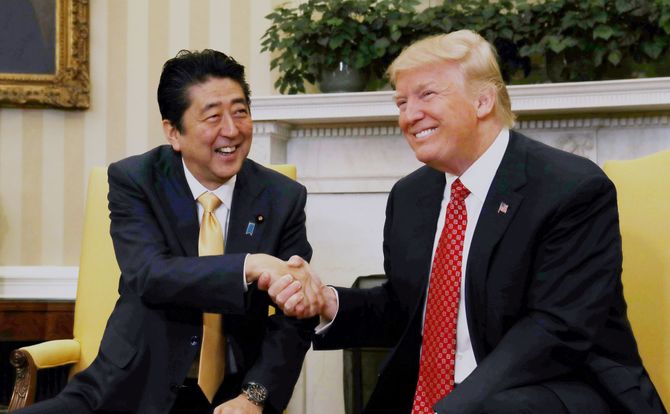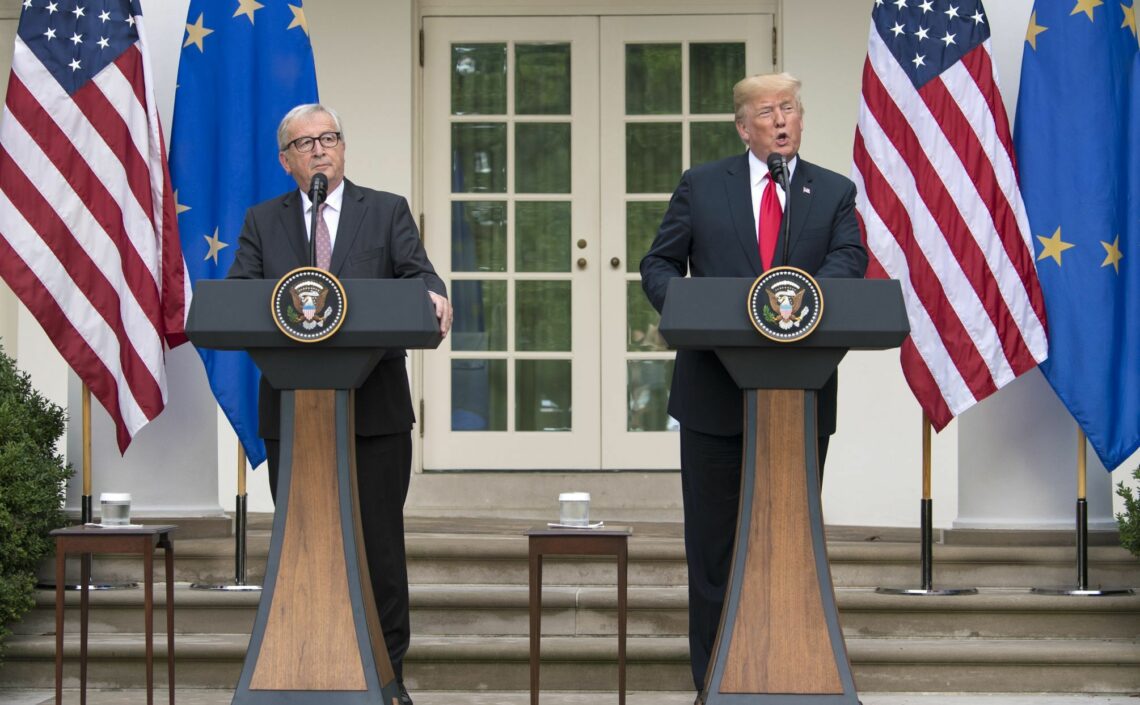Asia-Pacific countries look for signs of hope in Trump trade policy
Over the past two years, protectionism has dominated U.S. trade policy decisions regarding the Asia-Pacific region. However, there are signs that the administration could soften its stance and return to more pro-free trade policies. If it does, that could lay the groundwork for a return to bigger economic engagement in the region.

In a nutshell
- The Trump administration’s protectionist moves worry Asian countries
- There are signs that Washington could soften its stance
- If it does, the U.S. would lose less influence in the region
When it comes to international trade and investment, the story of United States President Donald Trump’s first two years in office has been one of intensifying protectionism.
The implications for Asia are complex. Partly because they have other options and partly because of domestic political dynamics, U.S. trade partners in Asia will not simply buckle to Washington’s demands.
These countries will seek compromise where they can, but they will also hedge against the uncertainty by expanding and formalizing links with other partners. If left unchecked, this dynamic will, over time, marginalize U.S. influence in the region.
What if, however, the U.S. were to return to an approach that is more open to free trade? Though that possibility is less likely than an intensification of the current trend, it is one worth exploring, because it points to the clues Asian partners should be looking for as proof of a more constructive approach.
Negative developments
Much has happened since April, when we last analyzed the effects of U.S. trade policy in the Pacific. So before looking at positive developments, it is important to take a quick inventory of the negative.
After many warnings, the U.S. has enacted tariffs on a total of roughly $50 billion in Chinese goods, and the Chinese have retaliated. Additional tariffs on $200 billion are under official consideration, with a decision to come soon. President Trump has informally threatened to expand these tariffs to cover all Chinese imports.
Most of the tariffs have been imposed to protest Chinese violation of foreign intellectual property rights.
Technically, most of these tariffs have been imposed to protest Chinese violation of foreign intellectual property rights. Publicly, however, the Trump administration has given a wide range of rationales. High-level talks in May featured a long list of U.S. demands, from reducing the trade deficit to the removal of investment restrictions and cutting tariffs on U.S. goods. Meanwhile, President Trump’s own rhetoric has only compounded the confusion over his administration’s priorities. For example, in August, Mr. Trump tied China’s cooperation on dealing with the North Korean nuclear threat to trade relations.
The most significant move on trade policy has been the imposition of tariffs on imported steel and aluminum, with exceptions negotiated for Argentina, Australia, Brazil and South Korea. The Commerce Department has also opened investigations into the implications for national security of $360 billion in auto imports and another into uranium imports – a step that could lead to further tariffs.
A story not as closely tracked as these – domestic content requirements – emerged again in August. News reports have indicated that there is an extensive interagency process underway to put into operation and expand on “Buy American” executive actions that trace back to the earliest months of the Trump administration.
Positive developments
As protectionist as these measures have been, there have been glimmers of a more open approach to international trade and investment.
In two relationships, with Japan and the European Union, President Trump has agreed to truces. The administration refused to grant either exemption from steel and aluminum tariffs, but it has entered dialogues to manage the economic relationships and potentially resolve disputes. The process with Japan started back in 2017. Just last month, it featured a meeting between American and Japanese trade secretaries. The process with the EU began much more recently, emerging from European Commission President Jean-Claude Juncker’s visit to Washington in July. In both cases, the administration has expressed an interest in pursuing free trade agreements (FTAs).

Following the meeting with Juncker, President Trump echoed a proposal he made during G7 meetings in Canada two months earlier. The president said he and Mr. Juncker had agreed “to work toward zero tariffs, zero non-tariff barriers and zero subsidies on non-auto industrial goods.” If it is more than a political ploy, this statement could have major implications.
That is not the only reference the Trump administration has made to new free trade deals. Since the withdrawal from the Trans-Pacific Partnership (TPP), it has consistently expressed interest in reaching agreements with countries in Southeast Asia and Africa. In fact, Deputy U.S. Trade Representative Jeffrey Gerrish traveled to the Philippines in May to open discussion about an FTA.
Then, at the end of August, it was announced that the U.S. and Mexico had reached a wide-ranging deal in principle on amending the North American Free Trade Agreement (NAFTA).
Even on the U.S.-China front there has been some limited progress. The U.S. lifted a ban preventing American companies from doing business with Chinese telecommunications company ZTE that had threatened to drive the firm out of business. Hope for more progress came in August, when China sent a mid-level trade delegation to Washington for talks just as a new round of tariffs was due to go into effect. The results of those talks were inconclusive, although they did include discussion of the administration’s objectives. There have been efforts since to resume official dialogue.
Signs of a better approach
U.S. trade partners in Asia-Pacific can look for several signs that would show Washington’s policy is evolving into one more focused on international opportunity and economic freedom. They include:
1. An interest in dialogue: U.S. discussions with Japan – and Prime Minister Shinzo Abe’s courtship of President Trump – have kept the economic relationship from deteriorating. This offers hope for the U.S.-EU initiative. In the event of a U.S.-China trade war, countries like Taiwan, Singapore and South Korea stand to lose financially. They want to see the U.S. and China talking. That dialogue is largely missing in U.S.-China relations adds fuel to the current crisis.
A little bit of realism from Washington will go a long way to reassuring trade partners in Asia.
2. Narrowing U.S. demands on China: That a delegation led by Treasury Secretary Steven Mnuchin went to China in May and presented Washington’s demands was good; that the demands were so broad was self-defeating. A little bit of realism from Washington will go a long way toward reassuring trade partners in Asia.
3. A more constructive approach to the World Trade Organization (WTO): To date, the Trump administration has been very negative about the WTO. Nevertheless, it has appealed to it on occasion, to protest retaliation against its tariffs and to address discriminatory Chinese technology licensing. More generally, as WTO Deputy Director General Alan Wolff said, “The U.S. is actively engaged in a whole panoply of areas. There is no evidence whatsoever of disengagement.” Beyond this, the Trump-Juncker meeting included an agreement to work together to reform the WTO, which could get at the most serious U.S. concern – the operation of the organization’s Appellate Body, to which the U.S. has blocked the appointment of new judges.
4. Conclusion of an agreement with Canada and Mexico: The administration has started the process of getting the revised NAFTA through Congress. It is not at all clear that the administration can legally keep Canada out of the agreement, as it has threatened to do. But failure to incorporate Canada will confront not only stiff resistance in Congress, it will send negative signals to other trade partners. Beyond tactical points, the details of several substantive issues of interest to Asian trading partners – like the “sunset clause” that would cause automatic expiration of the agreement, as well as the continued application of steel and aluminum tariffs – remain unclear.
5. New exemptions from steel and aluminum tariffs: These exemptions come at a price, most notably voluntarily restraining exports to the U.S. Yet, making even such flawed exemptions for critical security partners like Japan and NATO allies, or security dependents like Taiwan, will show that the Trump administration understands the broader geopolitical context.
6. Refraining from new across-the-board tariffs on autos: This is the most serious action on the table today, covering $360 billion in U.S. imports. In contrast to what has preceded it, the move would have a major impact on the U.S.’s economy and its trading partners. Additionally, if the tariffs do go into effect, and South Korea is not exempted, the successful renegotiation of the U.S.-Korea Free Trade Agreement (KORUS) – announced in March this year – could be scuttled.
The Japanese continue to press the option of the U.S. returning to TPP.
7. Opening of new formal trade talks with an Asian country: The U.S. Trade Representative (USTR) has many issues on its plate. Finding the time and personnel to launch FTA negotiations with the Philippines, Vietnam or Malaysia will show that it still has the capacity and inclination for new, market-freeing initiatives. Of course, the substance of such agreements will have to be monitored carefully to see that they are truly “free” trade agreements and not primarily efforts to coerce supply chains.
8. A return to TPP: This is unlikely, but still possible. The TPP countries have moved on without the U.S. Moreover, members of the Trump administration have long expressed concerns that TPP arbitration and amendment processes would undermine American sovereignty. These concerns go beyond what President Trump thinks is needed for a “good” business deal. But the Japanese, especially, continue to press the option in talks with the U.S. Perhaps a compromise will be found to address American concerns that allows Washington to reconsider.
9. Agreement with the EU: This is another unlikely, but possible outcome. The administration has expressed official interest in reaching a deal. Such an agreement would not directly affect Asia or the U.S. role there, but it would show a return to a reasonable approach to trade.
10. Active, productive FTA negotiations with the UK: This is the new bilateral arrangement with the best prospects in Washington. The two sides have been discussing the shape of a deal informally pending the conclusion of Brexit in 2019. Like negotiations with the EU, it is not directly related to Asia, but it would send a positive signal regarding support for free trade.
Reassuring partners
A softer edge to the administration’s trade strategy (even as it stays focused on bilateral trade deficits, reciprocity, and protection for American industry) would reassure partners in the Asia-Pacific of Washington’s commitment to the economic components of foreign policy. It will slow the marginalization of the U.S. in the region’s geopolitics and lay the groundwork for a more robust return to economic engagement.








